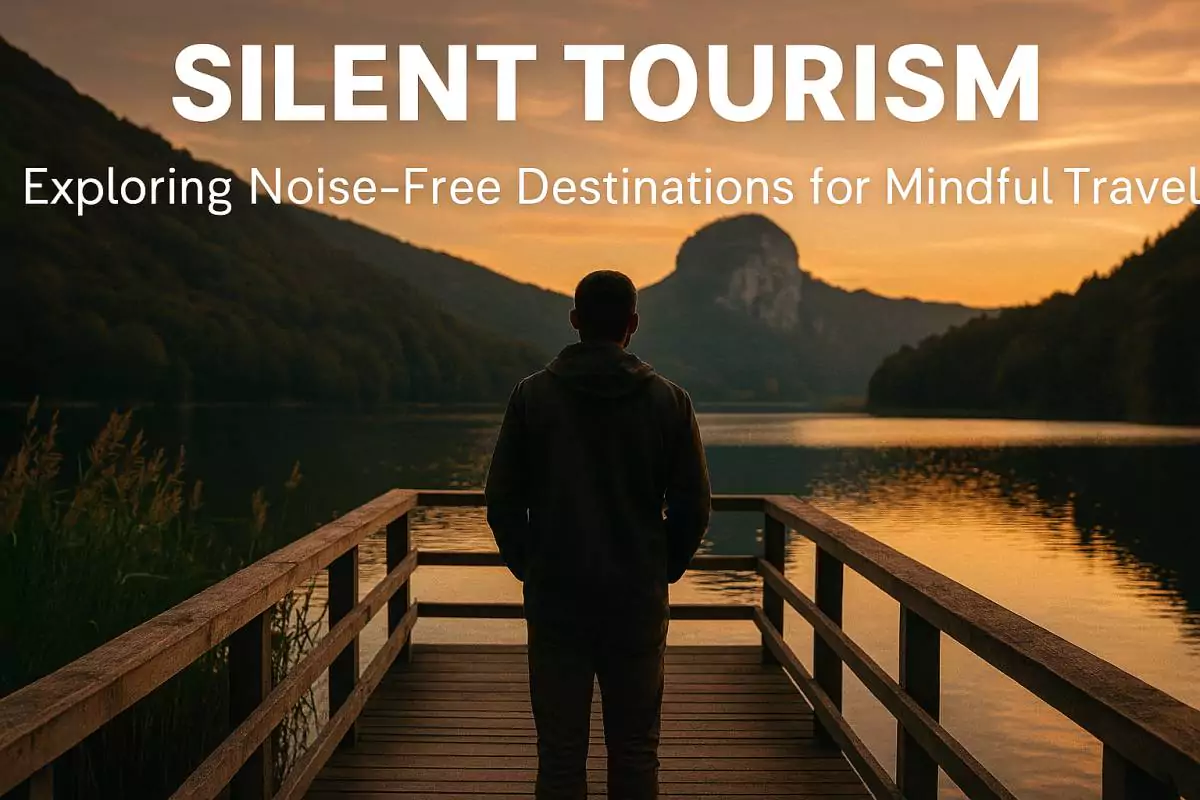Silent Tourism: Exploring Noise-Free Destinations for Mindful Travel

Silent tourism is the rising travel trend where people seek quiet, noise-free destinations to disconnect from chaos and experience mindful living. Unlike regular vacations filled with busy attractions, silent tourism focuses on calm spaces, natural soundscapes, and mindful activities that reduce stress and recharge mental well-being. It is not just about traveling in silence—it’s about rediscovering inner peace in environments where noise pollution is minimal, and serenity takes center stage.
Why Silent Tourism Is Growing Popular
In today’s hyper-connected and noisy world, travelers are increasingly searching for experiences that offer calm, focus, and restoration. Silent tourism provides exactly that. People are tired of crowded beaches, buzzing nightlife, and endless digital interruptions. Instead, they are looking for:
- Peaceful getaways that enhance mental clarity.
- Destinations away from city noise, where natural sounds like rustling leaves or flowing rivers dominate.
- Mindful practices such as meditation, yoga, and reflection without distractions.
This makes silent tourism not just a trend but a lifestyle shift in the way people approach travel.
Benefits of Silent Tourism
1. Reduces Stress and Anxiety
Noise pollution is a silent killer for mental health. By escaping to destinations where calmness rules, travelers can lower stress levels, balance emotions, and feel refreshed.
2. Improves Mindfulness
When distractions are minimal, people notice small details—like the way light reflects on water or the rhythm of their breathing. Silent destinations help develop mindfulness naturally.
3. Enhances Connection with Nature
Silent travel destinations often involve forests, mountains, or secluded beaches. These places allow visitors to experience nature without interference, deepening their appreciation of the environment.
4. Promotes Sustainable Tourism
Silent tourism usually avoids overcrowded tourist hubs. By choosing eco-friendly retreats and offbeat places, travelers contribute to sustainable practices that protect local culture and nature.
Top Silent Tourism Destinations in the World
Silent travel doesn’t mean isolation; it means choosing the right environment. Here are some top noise-free destinations for mindful travelers:
1. Rishikesh, India
Known as the “Yoga Capital of the World,” Rishikesh is a hub for meditation, spirituality, and riverside serenity. Many silent retreats here offer detox programs, digital-free zones, and meditation courses.
2. Damanhur, Italy
This unique eco-village in the Italian Alps promotes mindful living and deep silence. Travelers can join meditation sessions, explore underground temples, and live in harmony with nature.
3. Aokigahara Forest, Japan
Located near Mount Fuji, this dense forest is known as the “Sea of Trees.” It’s one of the quietest places on Earth, where the sound of wind through the trees is louder than human chatter.
4. Big Sur, California, USA
A coastline filled with cliffs, forests, and quiet retreats. Many travelers come here for yoga, silent meditation, and digital detox while listening to the natural sounds of waves.
5. Ladakh, India
High-altitude deserts and monasteries make Ladakh a perfect silent tourism destination. The vast landscapes and Buddhist chants create a mindful escape.
6. Iceland’s Highlands
Vast, uninhabited, and surreal, Iceland’s highlands offer volcanic landscapes, hot springs, and a silence so profound that travelers can hear their own heartbeat.
Activities in Silent Tourism
Silent tourism isn’t just about staying quiet. It includes mindful activities that enrich the experience:
- Silent Retreats: Meditation centers where travelers practice days of silence.
- Nature Walks: Exploring forests, hills, and coastlines without music or gadgets.
- Yoga and Mindfulness: Retreats where yoga and breathing exercises enhance inner peace.
- Digital Detox Vacations: Destinations with no Wi-Fi, encouraging travelers to disconnect from screens.
- Wellness Programs: Detox diets, spa therapies, and healing practices paired with silence.
Silent Tourism vs. Regular Tourism
| Feature | Regular Tourism | Silent Tourism |
|---|---|---|
| Focus | Sightseeing, entertainment | Mindfulness, inner peace |
| Environment | Busy, crowded, noisy | Quiet, natural, peaceful |
| Activities | Parties, shopping, nightlife | Meditation, yoga, silence retreats |
| Impact | Can increase stress | Reduces stress and anxiety |
How to Plan a Silent Tourism Trip
- Choose the Right Destination
Pick retreats, eco-villages, or offbeat natural places known for peace and quiet. - Go Off-Season
Traveling off-peak reduces noise and crowds, enhancing silence. - Limit Technology
Switch off unnecessary devices. Carry only essentials like a camera or journal. - Pack Mindfully
Bring comfortable clothing, meditation mats, books, and natural skincare essentials. - Set Intentions
Decide what you want to achieve—mental clarity, stress relief, or deeper connection with yourself.
The Future of Silent Tourism
Silent tourism is more than a trend – it’s a response to the modern-day noise crisis. As cities grow louder and digital distractions increase, people will continue seeking quiet sanctuaries. Future silent tourism will likely include:
- Digital-free resorts with no Wi-Fi.
- Forest and mountain sanctuaries preserved for mindful travel.
- Custom silent retreats designed for professionals, students, and families.
Final Thoughts
Silent tourism isn’t about rejecting sound entirely – it’s about choosing mindful spaces where silence becomes healing. It invites travelers to pause, reflect, and connect with themselves in ways that noisy destinations cannot offer. If you are tired of chaotic trips and want a more meaningful travel experience, silent tourism might be the journey you didn’t know you needed.









